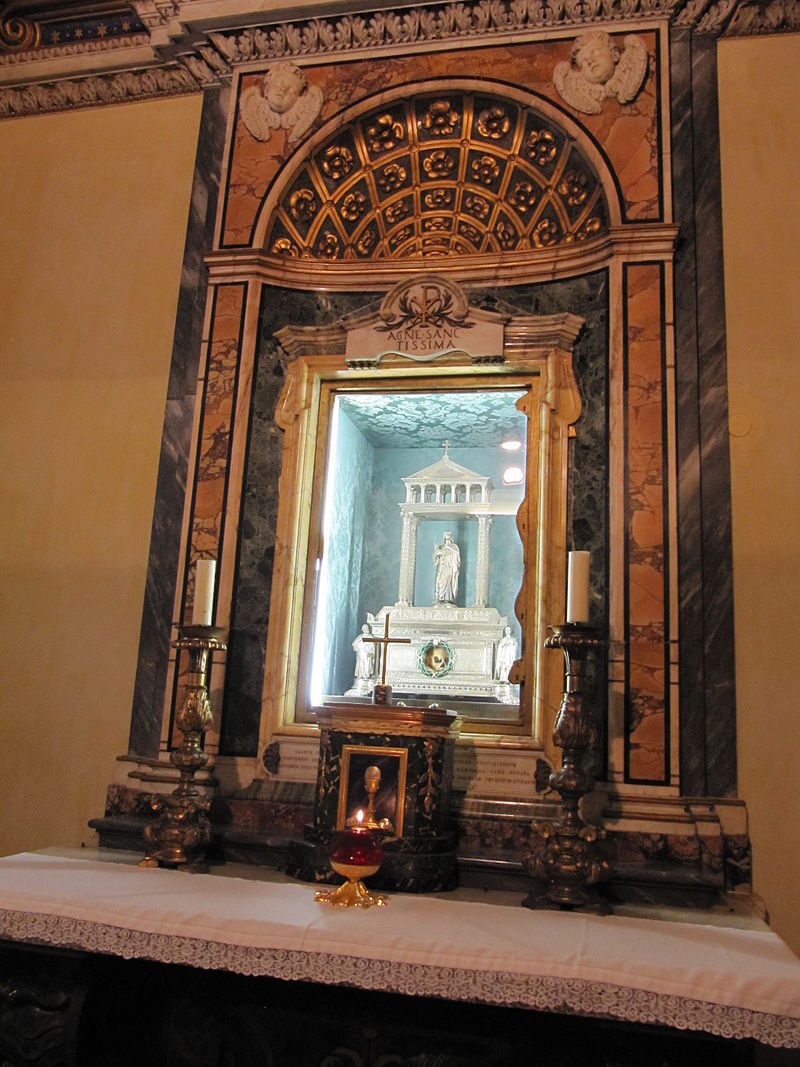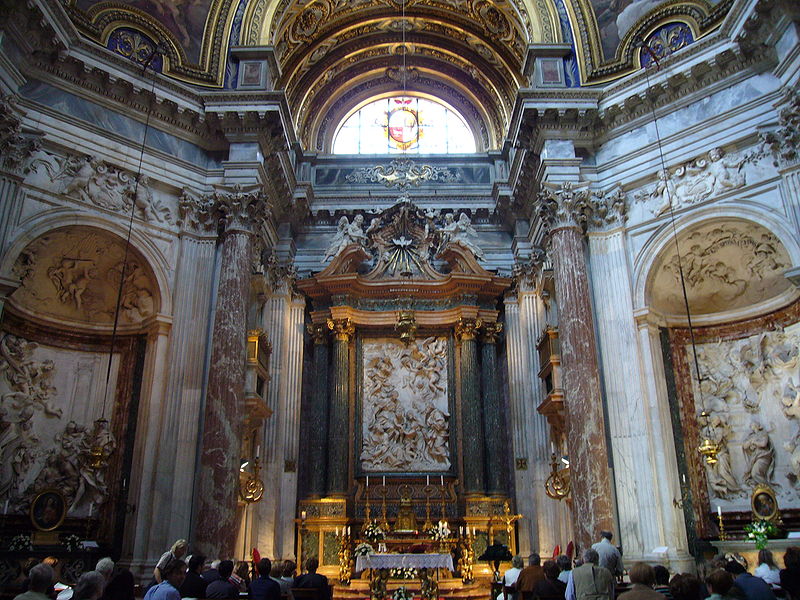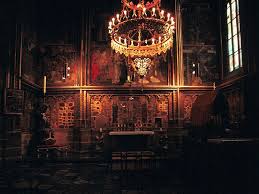
The shrine and relic (skull) of St. Agnes in the church of St. Agnes on the Piazza Navona.
The church of St. Agnes “in Agone” is a stunning 17th-century church in Rome, Italy. It faces onto the Piazza Navona, one of the main urban spaces in the historic center of the city and the site where the early Christian Saint Agnes was martyred in AD 304 at the ancient Stadium of Domitian. Construction of the modern church began in 1652 at the instigation of Pope Innocent X whose family palace, the Palazzo Pamphili (currently rented out to serve as the embassy of Brazil) is next door to this church. The church was to be effectively a family chapel annexed to their residence (for example, an opening was formed in the drum of the dome so the family could participate in the religious services from their palace).
The name of this church–St. Agnes in agone— is unrelated to the ‘agony’ of the martyr: “in agone” was the ancient name of Piazza Navona (“piazza in agone”), and meant instead, in Greek, ‘on the site of the competitions’, because Piazza Navona was built on the site of an ancient Roman stadium which was used for footraces. From ‘in agone’, the popular use and pronunciation changed the name into ‘Navona’, but other roads in the area kept the original name.
Bernini’s Fountain of the Four Rivers is situated in front of the church. It is often said that Bernini sculpted the figure of the “Nile” covering his eyes. (The four rivers are those which were thought to flow out of Paradise–the Garden of Eden–to bring fresh water to the rest of the world.)
The other church of St. Agnes in Rome — the Church of St. Agnes outside the Walls (Sant’Agnese fuori le mura)–is built outside the ancient walls of Rome atop the Catacombs of Saint Agnes, where the saint was originally buried, and which may still be visited from the church. Most of her relics are still there; only her head is at the Piazza Navona church. (I was recently given The Geometry of Love, a wonderful book by Margaret Visser about this church “outside the walls.” I highly recommend it!)

A view of the high altar in the church of St. Agnes on the Piazza Navona in Rome.

